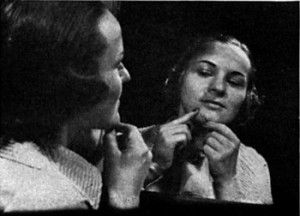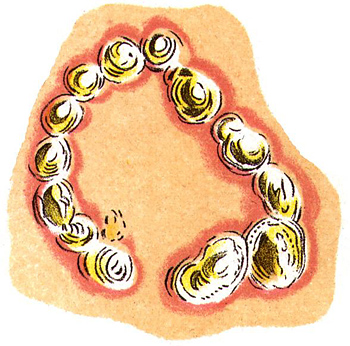How to Pop a Boil
If you don’t learn how to pop a boil the right way, you can make the infection worse than it already is. A boil is a skin abscess which forms when a localized infection forms on you skin. This infection starts as a tender spot, then gradually hardens, until the center of the boil softens into an abscess full of white blood cells and bacteria.
Why Do We Get Boils?
The bacteria is what causes the skin infection. White blood cells are the part of our blood which fights infections, so whenever we have an infection, white blood cells collect around the infection, attempting to fight this invasion of our body. The white blood cells are what gives pus its color. When you pop a boil, you’re attempting to drain the infection out of your body.

Popping Boils
Popping a boil is tricky, though, because your might not get all of the infection out. And if you don’t use proper hygiene when popping a boil, you risk exposing the sore to other bacteria, and therefore other infection. So study how to pop a boil the proper way and avoid making the infected area worse.
When to Pop a Boil
Don’t pop a boil when it’s still in the hardening phase. Only pop a boil when the soft white abscess has formed. At the early stage, opening the infection and draining it isn’t helpful, because enough white blood cells haven’t formed around it to isolate the infection and kill the bacteria at the heart of the infection.
Instead, when the boil still appears to be hardening, hold a warm or hot wash cloth on it. This brings blood to the infected area, speeding up the healing process.
Boil Popping Materials
You’ll need a few materials to pop a boil with the proper hygiene, so look in your cabinet, to make sure you have all of these before you pop a boil. If you don’t, go to the store and get prepared.
- Safety Pin
- Soap
- Clean Waste Cloth
- Clean, Dry Towel
- Candle
- Matches
- Hydrogen Peroxide
- Triple Antibiotic Ointment
- Bandage or Band-Aid
Prepare to Pop the Boil

How to Pop a Boil
It’s best to start in an area with plenty of lighting, along with access to hot water, soap, disinfectants and the tools you need to pop a boil. Your bathroom is the best place to do this.
Before you pop a boil, always wash your hands with warm water and soap. This cleans your hands of any germs that might infect your boil further. Next, get a clean wash cloth and run it under hot water, until the rag is as warm as the water. Wring the wash cloth out and set it in a clean area.
Dry your hands on a clean towel and now you are read to pop a boil.
Boil Popping Materials
You’ll need a safety pin and a flame, preferably from a candle, in which to heat up your safety pin. Take the safety pin, unfasten it and run the pin over the flame for 1-2 minutes.
The tip of the pin needs to be heated up considerably, to kill the germs on its surface, because you’ll be sticking this safety pin into your boil. Make certain the safety pin is thoroughly purified with flames.
Popping the Infected Boil
Take the warm face cloth and apply it to the surface of the boil firmly, but not too firmly. Hold it on the surface of the boil for 10-15 seconds. The cloth should still be relatively hot at this point. This cleans your skin and brings blood to the surface of the skin, to aid in the draining process, once the boil is popped.
Next, prick the head of the white part of the boil with the disinfected safety pin tip. This should place a hole in the top of the boil. Set down the pin. Immediately take both fingers and begin to squeeze on either side of the boil, as hard as your pain tolerance allows.
When you squeeze the boil, pus should begin to emerge fairly rapidly. Continue squeezing until you see blood. As soon as blood emerges, you’re finished and can stop squeezing. Remember, that little bit of blood is a good sign, because it’s washing out the wound.
Clean the Lanced Boil
Wash the boil area with hydrogen peroxide, which should kill any germs lingering around the wound. This should reduce the chances of infection considerably. Take a squeeze of triple antibiotic ointment and rub it onto the boil area.
Finally, put a Band-Aid or bandage on the area, to keep bacteria out of the punctured area, allowing your boil to finish healing properly. That’s how you pop a boil.
Popping Larger Boils
Large boils should be looked at by a doctor, before you pop it. Some boils require surgery to lance, while others indicate something more serious than a simple ingrown hair or bacterial infection. If the boil looks to be anything more than a simple abscess, talk to your doctor before proceeding.
Most boils are simple, though painful, infections of the skin. Learning how to pop a boil lets you speed up the process of healing and relieve the worst pains of having a skin boil.
